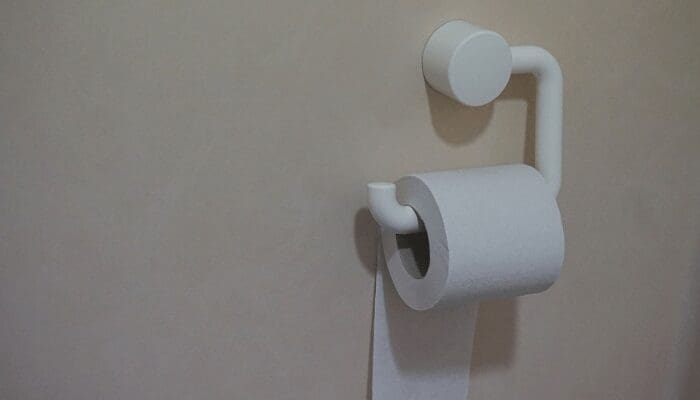What’s a Water Closet and Should Your New Master Bath Have One?
- Published on
- 3 min read
-
 Valerie Kalfrin Contributing AuthorClose
Valerie Kalfrin Contributing AuthorClose Valerie Kalfrin Contributing Author
Valerie Kalfrin Contributing AuthorValerie Kalfrin is a multiple award-winning journalist, film and fiction fan, and creative storyteller with a knack for detailed, engaging stories.
A water closet isn’t just a polite euphemism for a bathroom. This separate room or compartment for someone to use the toilet privately is among the top 5 most wanted bathroom features, according to the National Association of Home Builders (NAHB).
In fact, 65% of recent or potential home buyers listed this amenity as a desirable or essential feature in the master bath, according to the 2019 edition of NAHB’s What Home Buyers Really Want report.
Water closets, which may strike some buyers as the stalls in upscale public restrooms, are more prevalent in residential homes overseas. But they’re gaining traction in certain segments of the U.S. housing market.
“Typically, you’re going to see [a water closet] when the house is in excess of 1,800 or 2,000 square feet,” said Sue Strope, a top real estate agent for 30 years who serves Florida’s Port Charlotte and Punta Gorda areas.
“You’re going to find it more prevalent in a higher-priced custom home. Primarily because it is an added feature.”
Whether you’ve been looking for a home with just such an amenity or you find the concept unfamiliar enough that you wanted to ask your agent, “Just what is a water closet?” we’ve got you covered. Let’s take a closer look at this tucked-away aspect of the bathroom.

A brief history of the water closet
The toilet has a curious history, evolving from a “motley collection of communal outhouses, chamber pots and holes in the ground,” according to Smithsonian magazine.
Eleventh-century castles incorporated early bathrooms with toilets—essentially, vertical niches to the ground—into their architecture, calling these small rooms that protruded from castle walls “garderobes.”
Historians say the word “garderobe” is a euphemism for a closet as well as advice to “guard one’s robes” by hanging clothing in this toilet shaft to kill fleas.
Sir John Harrington, godson to Queen Elizabeth I, is credited with inventing the first “water closet” or flush toilet in 1596, which he called a “necessary.” Roughly 200 years later, in 1777, another Englishman, Samuel Prosser, received a patent for a “plunger closet,” which further evolved the toilet’s design.
To builders nowadays, a water closet refers to a room with just a toilet, although some companies, such as Richmond American Homes, will include water closets in the same category as a powder room or a half bath—a room with a toilet plus a sink. A three-quarter bath is a water closet plus a sink and a shower whereas a bathroom includes a sink, a toilet, and a bathtub with a shower.
Travelers abroad will notice signs for a “washroom” or “W.C.” for “water closet” when signifying a bathroom in English-speaking countries. Strope said she saw water closets often when traveling through Europe, perhaps both because of the older architecture and retrofitting older buildings with bathroom space.

What’s to love about a water closet? Privacy and cleanliness
Although some designers in the luxury sphere are creating bathrooms with a view, others have embraced the water closet as a modern bathroom layout. In fact, a 2018 survey from NAHB listed a water closet among the top 15 features most likely to be in a newly built home.
Its main appeal is privacy, especially in a master bath where spouses or partners may be sharing the space at the same time.
By separating the toilet from the rest of the bathroom, a water closet also keeps “the least attractive feature of the bathroom out of sight,” noted Mosby Building Arts, a home remodeling contractor in St. Louis, Missouri.
Depending on the bathroom’s design, this compartment can be enclosed with a regular door or pocket doors, which slide into the adjacent wall and need no room for hinges.
In addition, a water closet or private toilet compartment can help the bathroom remain more sanitary by separating toiletry items from the commode, added Freshome, an interior design and architecture blog since 2007 with more than 3.8 million unique monthly visitors.
According to an article from Time Magazine, the bathroom is notorious for having germs, although not so much on the toilet seat. Hand towels and toothbrush holders tend to be the bathroom’s worst offenders for germs because people clean them less often than the toilet, the article notes, so keep that in mind!
The case against water closets: What a waste of space!
In its bathroom planning guide, Better Homes Gardens notes that the minimum size for a separate toilet compartment by building code requirements is 30×60 inches, or about 2.5 feet by 5 feet. The magazine recommends at least 36×66 inches.
Even that is a tight space for some buyers, Strope said. “It’s just something that could create a problem if you had people who were particularly claustrophobic,” she said.
Architect Steven Randel, writing at Forbes.com, said a compartment that’s 42 to 48 inches wide by 66 to 72 inches long is more luxurious and comfortable. He recommends installing a window here or at least an exhaust fan for ventilation.
Fischer Construction Design, a general contractor since 1974 serving Santa Clara, California, and Silicon Valley, recommends using glass walls, tile, or other unique materials to bring visual interest to a water closet or toilet compartment so the space feels less closet-like.
Aside from its small space, which may not be ADA-accessible, a water closet can make a bathroom feel cramped, depending on its location in the bathroom’s design. In this case, buyers might wish the space had been devoted to something else. According to the NAHB survey, buyers would prefer a master bath with a linen closet (78%), both a shower and a tub (73%), and a double vanity (71%) over the inclusion of a water closet.

Water closets come with a cost
A listing that includes a water closet or a private toilet compartment no doubt will add that feature to the asking price. “I would say that when builders are trying to keep things affordable, they’re generally not going to enclose the toilet,” Strope said.
Framing a wall alone costs $7 to $16 per square foot, plus $20 to $30 per linear foot for drywall, according to HomeAdvisor.com. A load-bearing wall, which supports an entire floor plus a roof and ceiling (compared to a half wall or partition) increases material costs by about 30%.
Then there are the costs for door and the toilet itself. Bear in mind: A toilet in certain price points can be more than just functional. A low-flush toilet, such as Sun-Mar’s 510 Plus, which costs about $430, conserves water by using about 0.125 gallons per flush.
Toilets account for more than one-third of the water used in most homes, so replacing a post-1980 model that uses 3.5 gallons per flush with one that uses 1.6 gallons can reduce your annual water use by up to 54 percent, according to the Massachusetts Water Resources Authority.
Then there are the high-tech “smart toilets,” such as the Numi by Kohler, which has seat and feet warmers, built-in Bluetooth-enabled speakers, multiple bidet spray functions, and a precision air dryer, all for about $8,000.
Variations on the water closet: The budget-friendly enclosure
Whether you find a water closet to be a bathroom perk or total waste of space is really a personal question and a matter of preference. Even if a water closet isn’t on your wish list, you might find a property that has just the right layout to convert one—or redo an existing water closet into something that suits your style.
If you like the idea of privacy that a toilet compartment or water closet provides but want something less enclosed and more affordable, Strope suggests looking for an alcove or nook in the bathroom that could serve a similar purpose.
“If it’s well positioned, you could create the impression of a water closet,” she said.
In one house that she had built years ago, for instance, builders installed a half-wall next to the toilet with a stained glass panel above the partition. This created a space that felt “open to the rest of the room, but you could have complete privacy without feeling like you were in this enclosed area,” she said.
Or maybe a regular ole’ bathroom is all you need to be a happy homebuyer. At least you know the vocab now!
Header Image Source: (Breadmaker/ Shutterstock)
